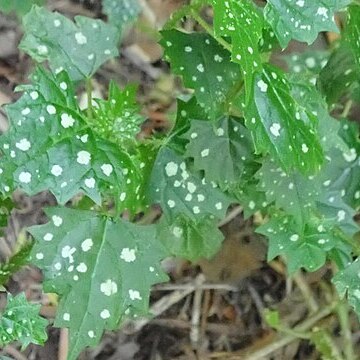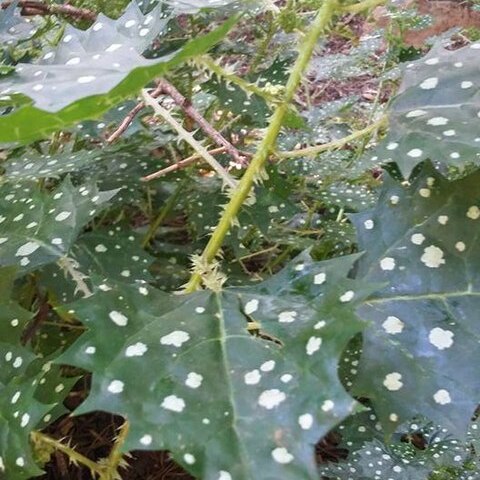Annual herb, 0.3-1.0 m high; monoecious. Leaves ovate, 130 x 120 mm, stinging hairs in centre, glabrous above, few stinging hairs below, base truncate, with white blotches, apex acuminate, margins serrate; petioles up to 125 mm long; stipules minute, early caducous. Inflorescence paniculate, with few stinging hairs. Male flowers 4-or 5-merous, 2 mm in diam. Female flowers 1.5 mm long. Flowering time Dec.-Mar. Fruit smooth achenes, circular ridge near edge, ± 175 mm long.
A nettle herb. It grows each year from seed. The stems are soft. They can be lying down and form roots at the nodes. It grows 1 m tall. It can have a few stinging hairs. The leaves are broadly oval and 6.5-13 cm long by 4.5-12 cm wide. There are large teeth along the edge.
Monoecious annual to 1 m, with deflexed stinging hairs on raised base. Leaves triangular, coarsely toothed to lobed, sparsely armed, often spotted white. Flowers in axillary panicles, small, greenish.


